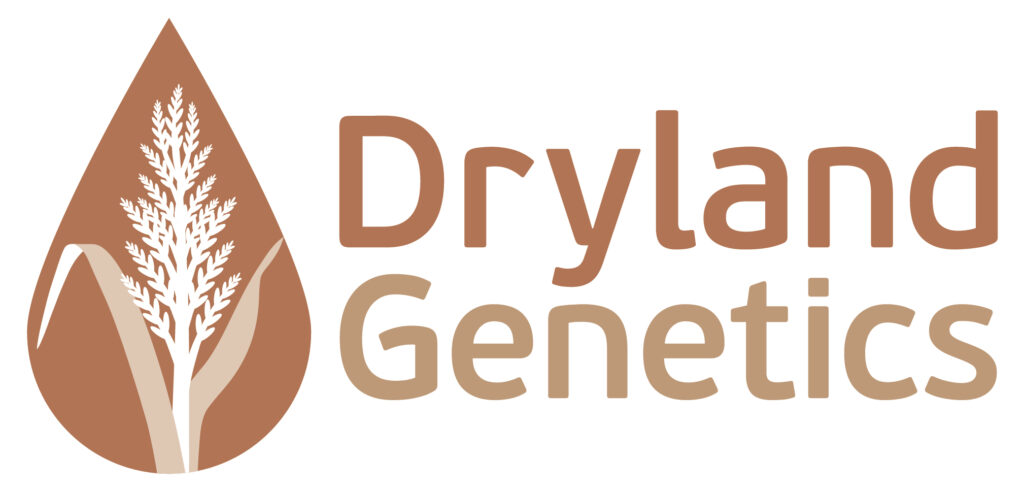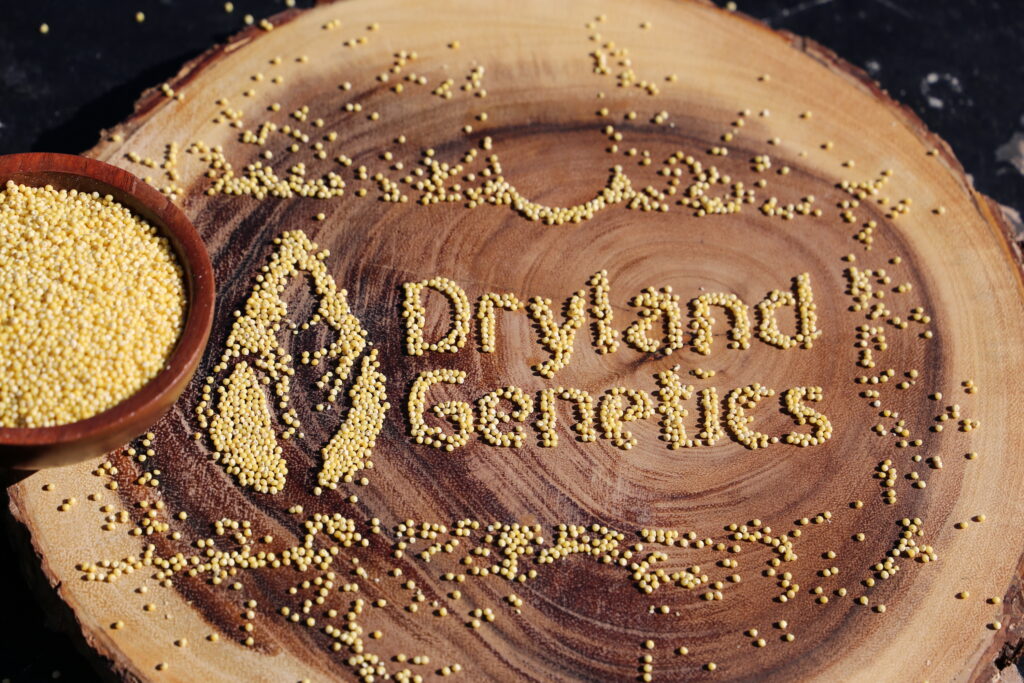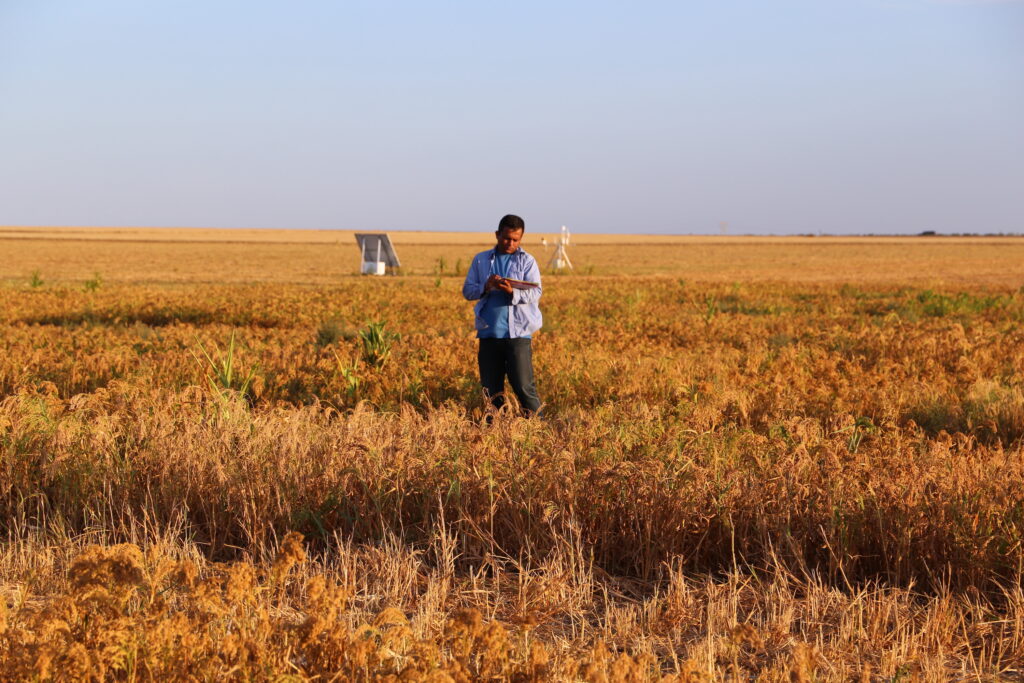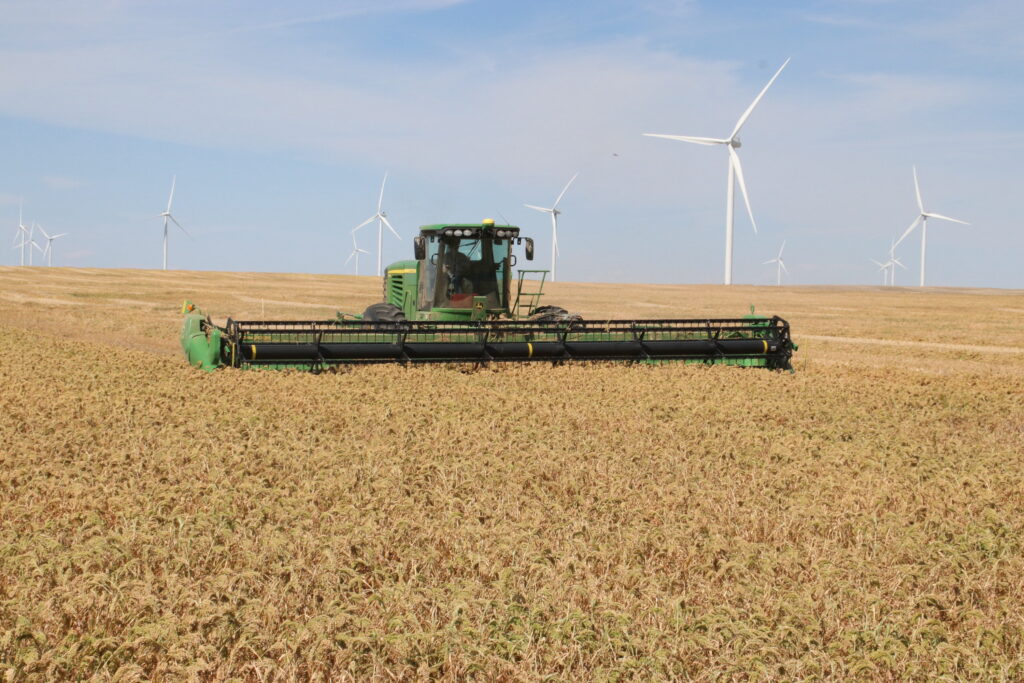
For our May Member Spotlight, we talked to Dryland Genetics, a crop breeding company focused on ensuring a sustainable food supply for a world with less water.
Tell us about Dryland Genetics.

Dryland Genetics is a crop breeding company focused on ensuring a sustainable food supply for a world with less water. We were founded in 2014 by two professors from the University of Nebraska and Iowa State University (James Schnable and Patrick Schnable, respectively). Our goal was to use the advanced breeding technologies originally developed to improve the yield of crops like corn and soybeans to improve the yield and production economics of crops that can produce more food from less water. Our first target was a crop called proso millet which is currently grown primarily in western Nebraska and eastern Colorado. Proso millet can be used for all the same things as corn, human food, animal feed, and ethanol production. Proso millet produces less grain per acre is lower than corn but a lot more grain per acre-foot of water.
We raised our first fundraising round in 2014 to demonstrate that our technology and approach really could increase the yields of proso millet. In 2021 we brought our first two new proso millet varieties to market, with some of our customers seeing up to a 40% increase in how much grain they harvested from their fields over the best previously available options. Last year we closed our second fundraising round from a group of investors including Stine Seed to scale up production and sales of our new varieties, as well as continuing to breed new proso millet varieties with features that our customers have requested.
What impact does Dryland Genetics have on Nebraska’s ag industry? Beyond Nebraska?
In Nebraska, we’re fortunate to have done a much better job than some places in managing our limited supply of both ground and surface water. But there are large parts of our state where agricultural production is limited by how much water farmers have access to and not by how much land they have access to. Breeding and commercializing new and higher yielding versions of crops that produce more food from the same amount of water can increase the economic vitality of large parts of the state. Depending on crop prices and assumptions about production costs, even a 20% increase in grain yield can be enough to double farmer’s profit per acre.
At the same time, increasing grain production in western Nebraska would be a major benefit to both western feed lot operators and western ethanol plants. Many of both are having to pay substantially higher prices for corn out there as, in years like this past one, there isn’t enough corn produced locally and they have to tap into more distant markets, paying higher shipping costs.


Who are your customers and where are they located?
Right now, the majority of our customers are farmers here in Nebraska and across the border in Colorado. However, we’ve had customers reach out to us to buy seed for our proso millet varieties from as far south as Oklahoma and as far north as the Dakotas. Our varieties even do really well in central Iowa. They don’t match the yields of corn out there, but since farmers aren’t having to pay the large amounts of nitrogen fertilizer they’d apply for a corn crop the profit per acre for a farmer in Iowa growing proso millet is surprisingly competitive, and that is before considering the benefits of economic diversification and being able to rotate a third crop.
What are some of the biggest challenges facing the ag industry today and how does Dryland Genetics play a role in helping overcome those challenges?
Farmers are being asked to do more and more with less and less. Global demand for food, feed, and fuel continues to increase, but at the same time growers have access to less water and are having to pay higher and higher prices for nitrogen fertilizer. Plant breeding and genetics have turned out to be excellent tools for increasing how much grain a farmer can harvest from his or her fields. But when it comes to producing more grain using less water or less nitrogen the track record of plant breeding is mixed as best. What we’ve done in Dryland Genetics is focus on crops that are already good at using water and nitrogen efficiently, and use all the tools in the plant breeder’s toolbox to do what plant breeding does best: increase the productivity of those crops to the point where farmers can make a good profit growing them.
While we were one of the earliest movers in this space, this strategy of finding or creating new efficient crops and then increasing their productivity (rather than trying to make our existing high productivity crops more efficient) is one we’re starting to see gain more and more traction across the industry. Bayer recently acquired a company called CoverCress that was developing a new oilseed crop that would use land more efficiently by growing in the fall and spring when that ground would otherwise be left barren.
What else would you like to include?
The world of agriculture is full of failed stories of “new” crops. The exciting thing about Dryland Genetics is that we’re not actually working with a new crop. Farmers have been growing proso millet in the USA for more than a century. Our customers plant and harvest proso millet with the same planters and combines they use for wheat. Our customers sell proso millet at the same grain elevators they sell their corn or beans. Not having to deal with the same logistics and supply chain issues a genuinely new crop faces are part of why we’re so optimistic at Dryland Genetics. In many ways, it will be much easier to go from the 700,000 acres of proso millet to 7,000,000 acres than it would be for a new crop go from 7,000 acres to 70,000.
